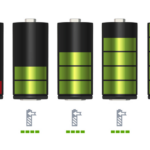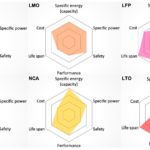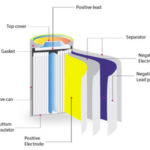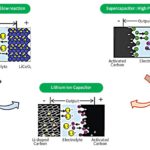
Awarepoint medical RFID [Image from Tadiran Batteries]
Sol Jacobs, VP and GM, Tadiran Batteries
What is a lithium thionyl chloride battery?
Under the broad category of primary lithium battery types, numerous types of primary (non-rechargeable) lithium battery chemistries are commercially-available that differ in their performance characteristics. The critical considerations are voltage, discharge current, service life and temperature range.
LiCFX (poly carbon monofluoride) and LiMN02 (manganese dioxide) chemistries are commonly used in consumer applications. LiSO2 (sulfur dioxide) batteries are mainly found in high power military radios. LiSOCl2 (thionyl chloride) chemistry is commonly utilized in industrial, remote and medical applications.
Lithium thionyl chloride (LiSOCl2) batteries can be manufactured two ways, using spirally wound or bobbin-type construction. Bobbin-type LiSOCl2 batteries offer the following performance characteristics:
- Greater energy density and higher capacity: Bobbin-type LiSOCl2 batteries offer the highest energy density of any primary cell: up to 710 Wh/Kg and 1420 Wh/I. These cells also feature the highest capacity by weight and volume of any commercially available battery technology.
- Extended temperature range: Bobbin-type LiSOCl2 batteries can operate in temperatures ranging from -55°C to +125°C. However, to maximize the capacity, standard cylindrical wafer type cells are rated to a maximum temperature of +85°C. Specially modified cells can extend the maximum high and low temperatures.
- Higher operating voltage: Bobbin-type LiSOCl2 cells have an open circuit voltage of 3.67V and an operating voltage of up to 3.6V.
- Longer life: Bobbin-type LiSOCl2 batteries feature an outstanding shelf life and long-term reliability due to a very low annual self-discharge rate. Over a 10-year period, a bobbin-type LiSOCl2 battery stored at room temperature can lose between 7% and 30% of its initial capacity depending on the manufacturer.
- Patented safety features: Bobbin-type LiSOCl2 cells offer unmatched safety due to their unique “fail-safe” construction. These batteries are also free of heavy metals, making them among the most environmentally friendly of all batteries.
Bobbin-type LiSOCl2 batteries can be combined with a patented hybrid layer capacitor (HLC) to deliver periodic high pulses to support two-way wireless communications and other advanced functionality.
How does it work?
In medical applications, the extended temperature range of a bobbin-type LiSOCL2 battery makes it ideal for use in RFID asset tracking tags that monitor the location and status of medical equipment throughout a hospital, nursing home or medical research facility. Equipped with this battery, the equipment can undergo high temperature autoclave sterilization cycles of up to 125°C without having to remove the battery from the RFID tracking device, providing an uninterrupted data stream. These robust batteries can also be modified to operate in the medical cold chain, where wireless sensors must endure temperatures as low as -80°C to continually monitor the safe transport of tissue samples, transplant organs and pharmaceuticals. The high capacity, high energy density and incredibly long shelf-life of a bobbin-type LiSOCl2 battery also makes this chemistry well suited for automatic external defibrillators (AEDs) as well as powering two-way wireless communications.





